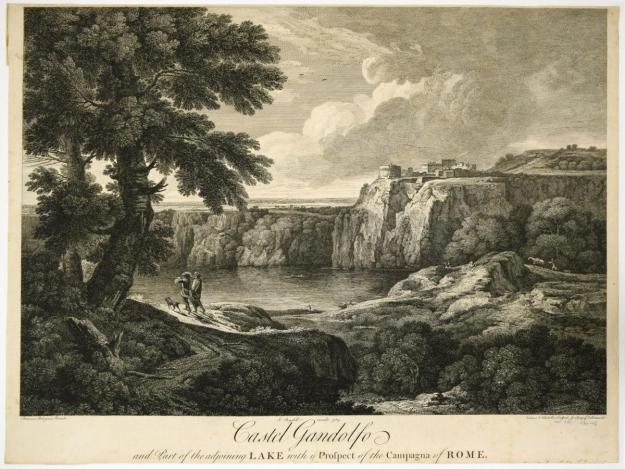Giovanni Francesco Grimaldi
Italian, 1606 - 1680
Painter, etcher and engraver, b. Bologna 1606, to Rome in 1627 where remained and died in 1680. President of Accademia di San Luca in 1666. Worked in Paris 1648-51 for Cardinal Mazarin.
He was possibly trained at the Carracci Academy in Bologna. In Rome he worked on a number of decorative projects, often in collaboration with other artists, for example with François Perrier (c. 1590-1650) and Giovanni Battista Ruggieri (1606-40) in the Peretti Gallery of the Palazzo Peretti Almagià, Rome, c. 1635-40 (see At,10.34 recto; At,10.81; At,10.83-84 and At,10.88 recto and verso)). The most important of these collaborators was his compatriot and friend, Alessandro Algardi (q.v.); together they worked on the vault of the Gessi Chapel, S. Maria della Vittoria and the catafalque for Ludovico Facchinetti (see At,10.70 and At,10.69), but the most important of their joint projects was the Villa Belrespiro. In 1646, under the patronage of Cardinal Camillo Pamphilj, this villa was designed, constructed and decorated by Algardi with substantial help from Grimaldi (see 1946,0713.1383; 1982,0724.4 and 1991,1005.80).
As a measure of his skills and renown as a painter of landscapes and decorative schemes, Grimaldi was summoned to Paris in late 1648 to work for Cardinal Mazarin (Frati, 1912, p. 147) part of whose palace he decorated. He also painted for the Regent and Queen Mother, Anne of Austria, in the Palais du Louvre (Laurain-Portemer, 1973), before he fled France in 1651 because of hostility towards Mazarin. He returned to Rome where, under the supervision of Pietro da Cortona (q.v.), he decorated part of the Sala Gialla in the Palazzo Quirinale for Alexander VII Chigi and established himself as the leading painter of wall and ceiling decorations, which consist of quadri riportati, stucco, grisaille and 'real' figures. Grimaldi's success is witnessed by his commissions for the decoration of several Roman palaces and villas: in c. 1672 the Hall of Spring in the Villa Falconieri, Frascati (see At,10.41, At,10.65 verso and At,10.66 verso)); a room in the Palazzo Borghese; the vault of the salone in the Palazzo Santacroce, Rome; and the Gallery of the Palazzo Muti-Papazzurri, Rome. He was a member of the Accademia di San Luca and was elected principe in 1666 (see At,10.99).
Grimaldi's ceiling designs and landscapes, especially the engravings after the landscapes, etched both by himself and by his son, Alessandro Grimaldi (1630-63), perpetuate his contemporary fame. Working in the tradition of landscape painting established by the Bolognese Annibale Carracci (1560-1609; see At,10.34 recto) and Domenichino (q.v.), as well as noting the influences of the Northern landscapists who worked in Rome, Grimaldi developed an ideal and serene landscape, drawn with a rapid line and with volume and shadow depicted through the use of washes and parallel hatching. He designed for the theatre and was in charge of the special effects for an opera, performed in the Palazzo Barberini, in honour of Queen Christina of Sweden (see At,10.56, At,10.106-7) who also owned several of his drawings (Batorska, 1971, pp. 251-3).
Grimaldi's style as a draughtsman was heavily dependent on Annibale and Agostino Carracci (1557-1602) as well as on Domenichino, and his numerous landscape drawings, the precise purpose of which is not always clear, endlessly vary compositions and motifs borrowed from these masters.
